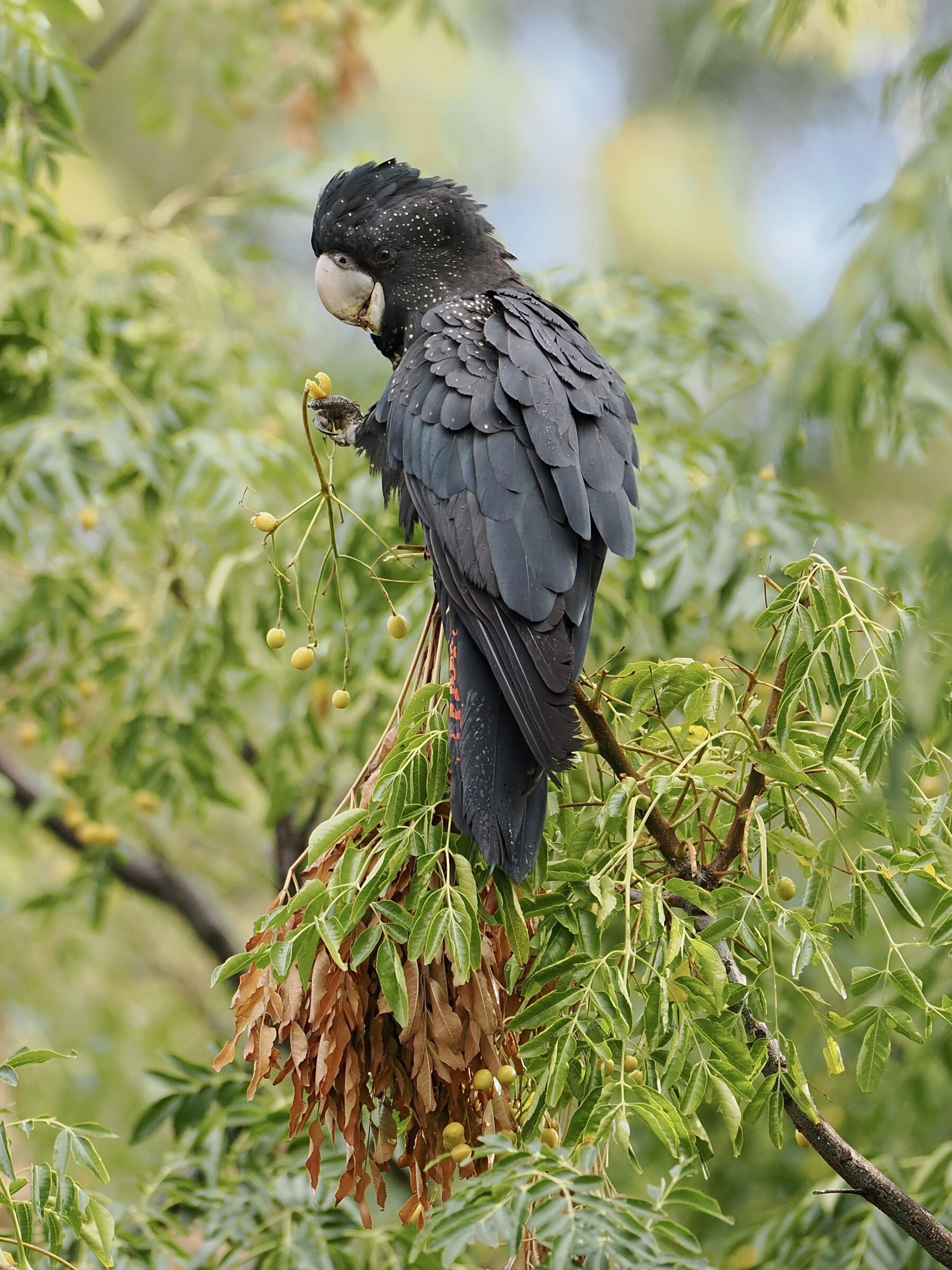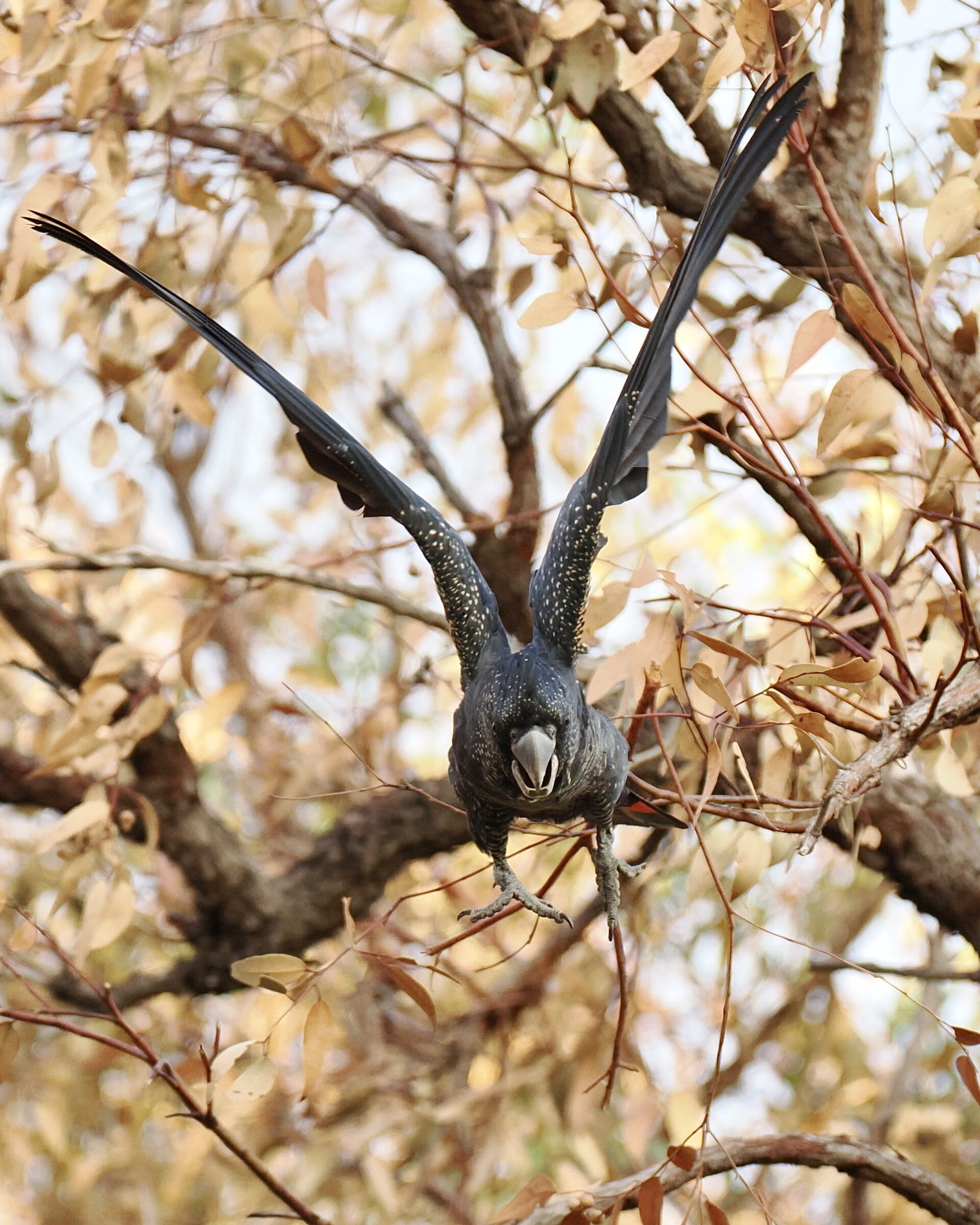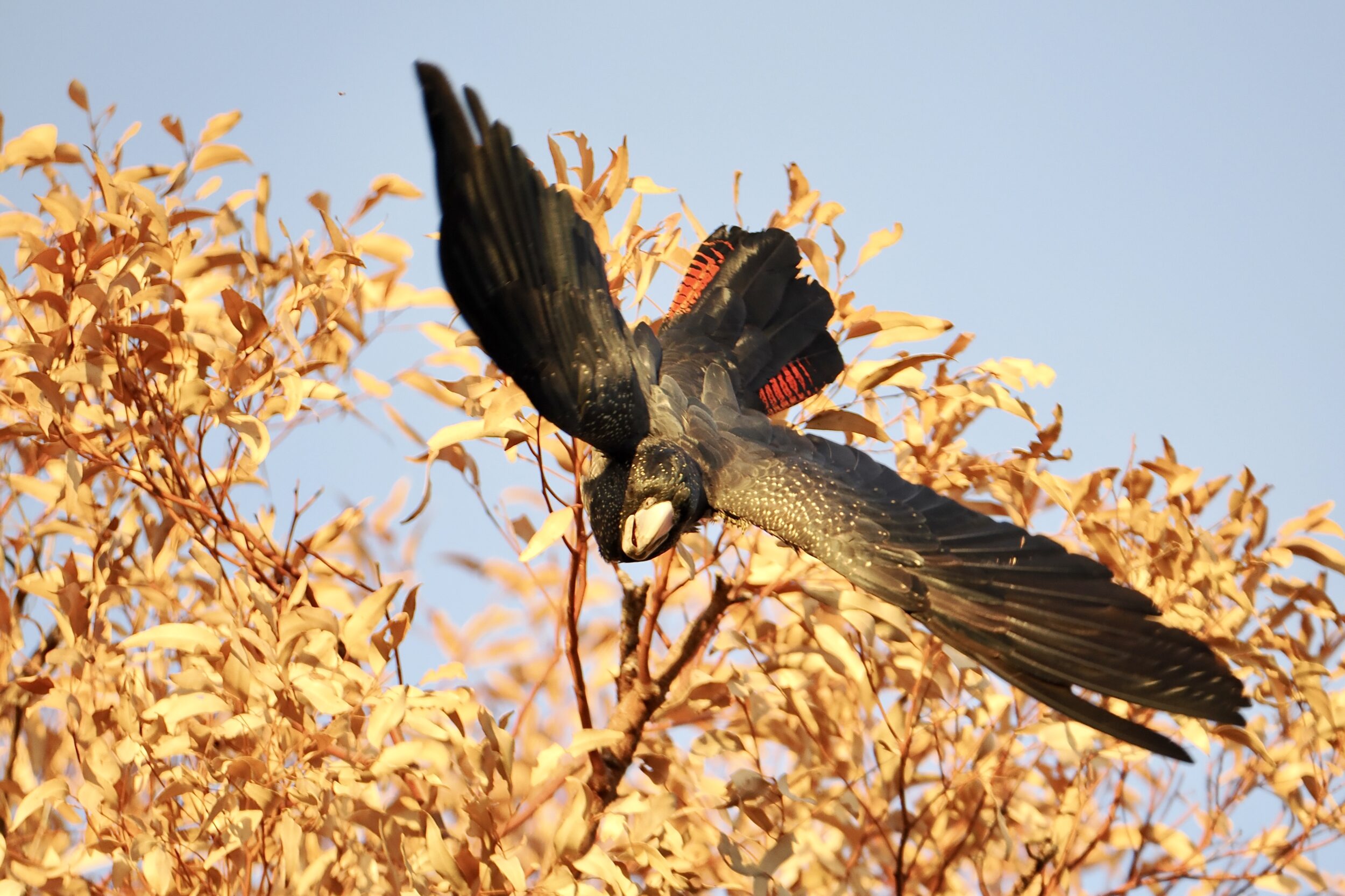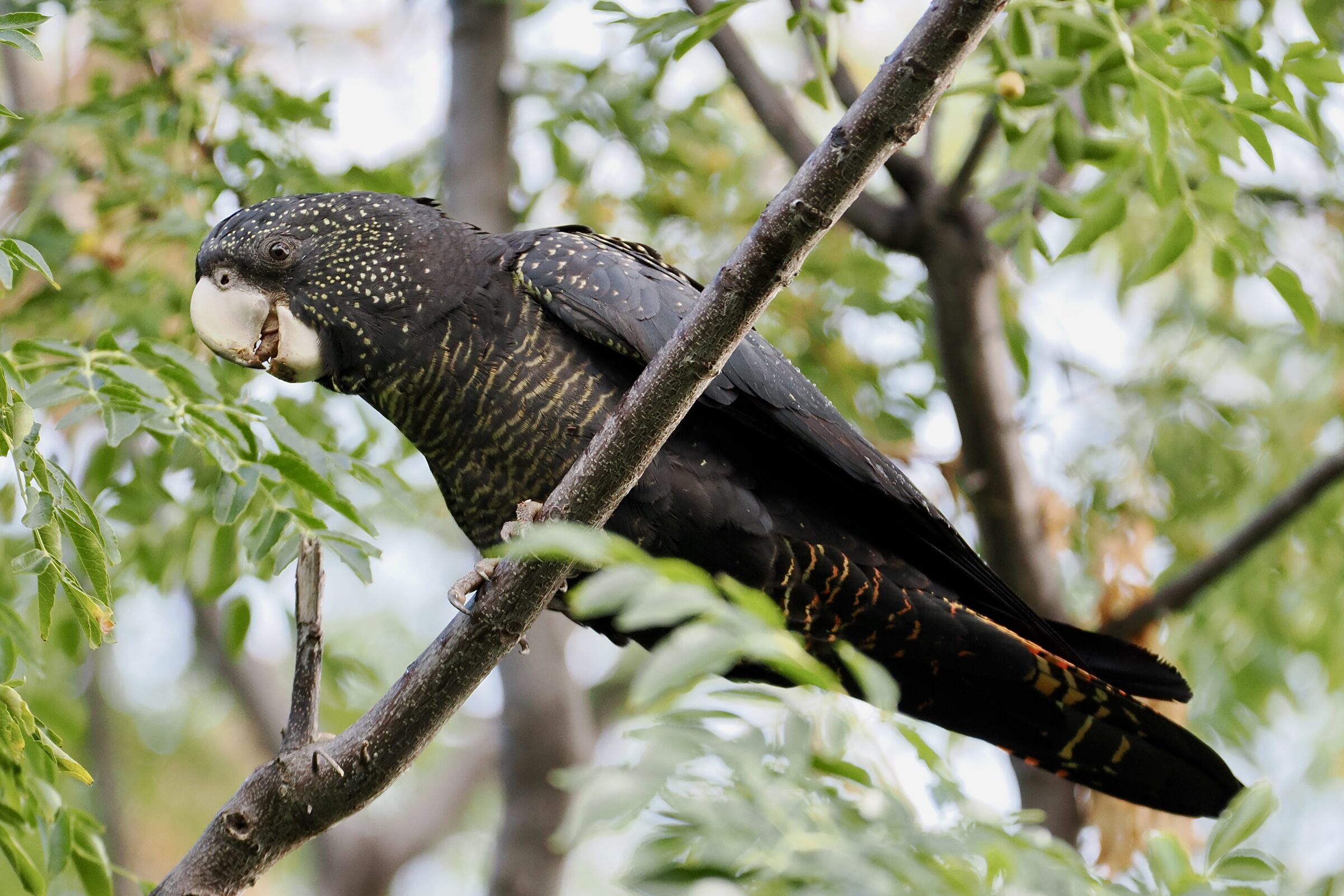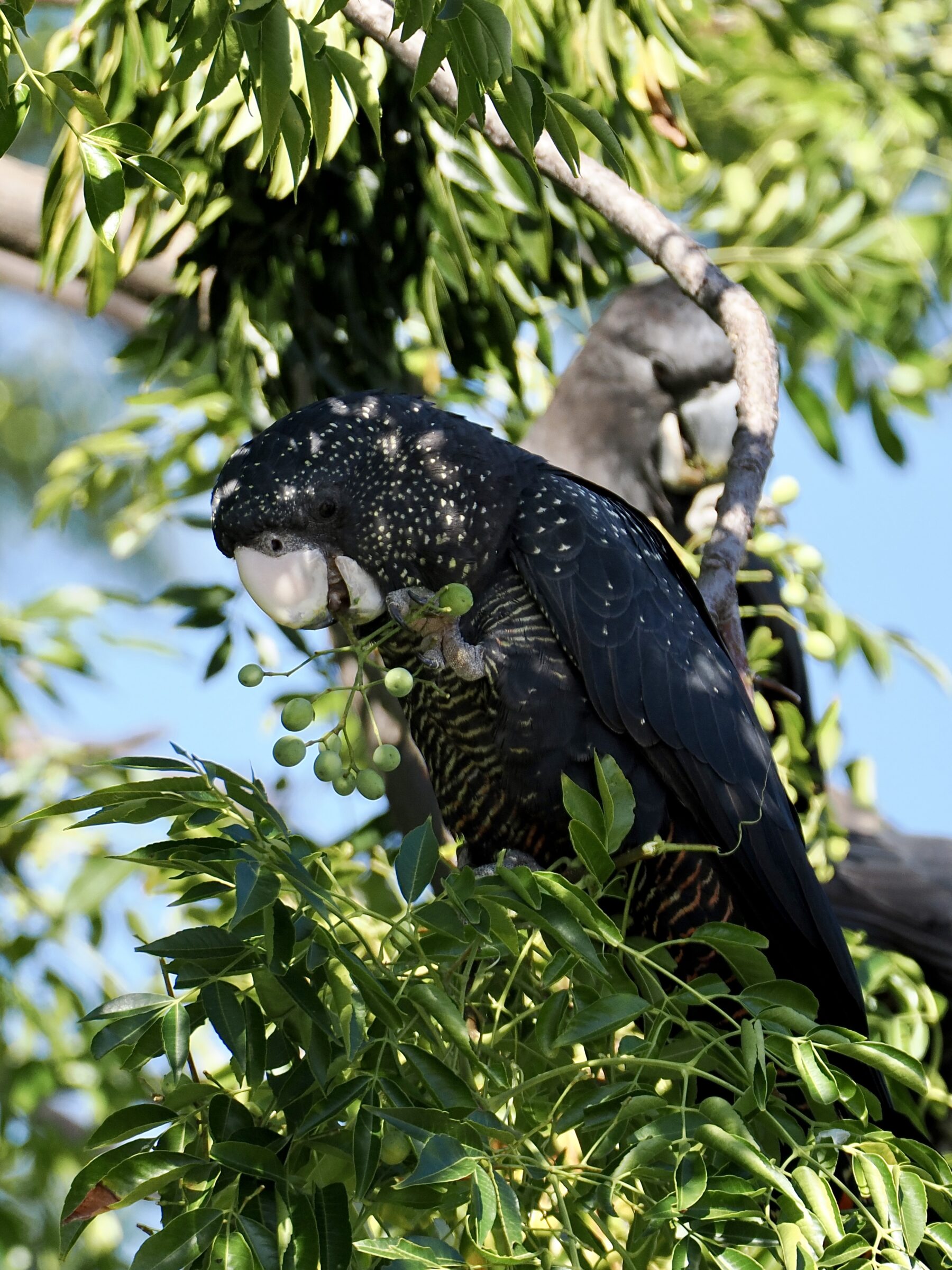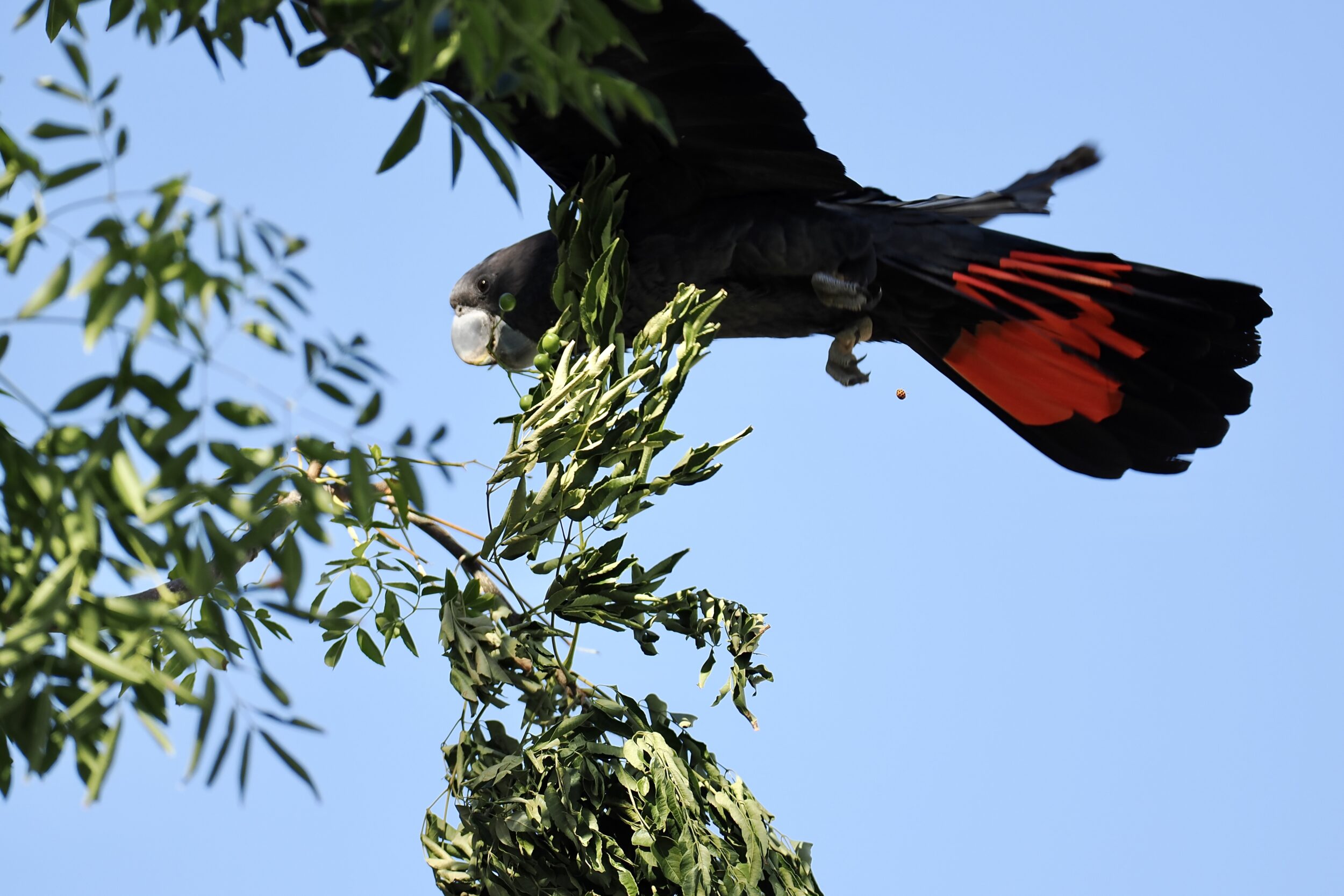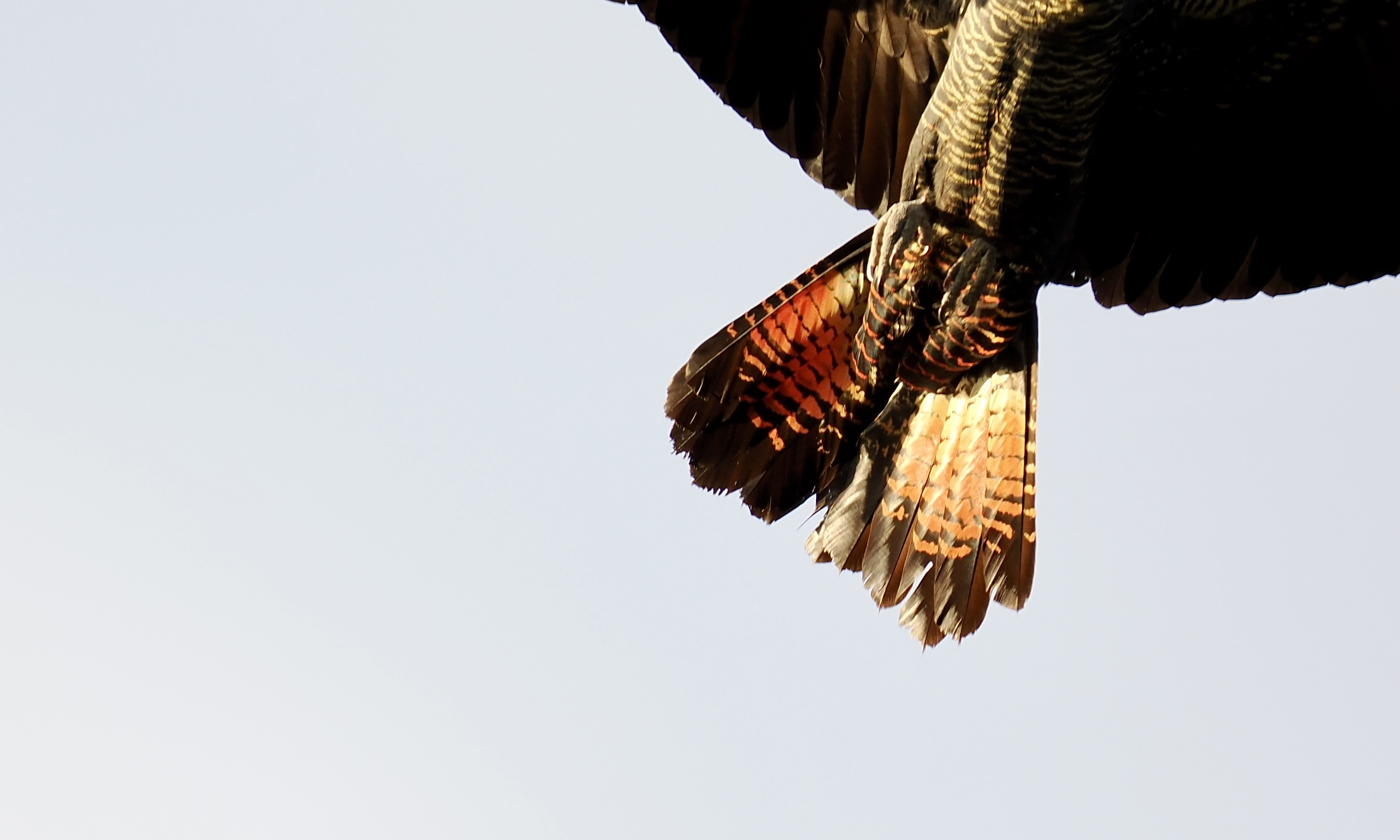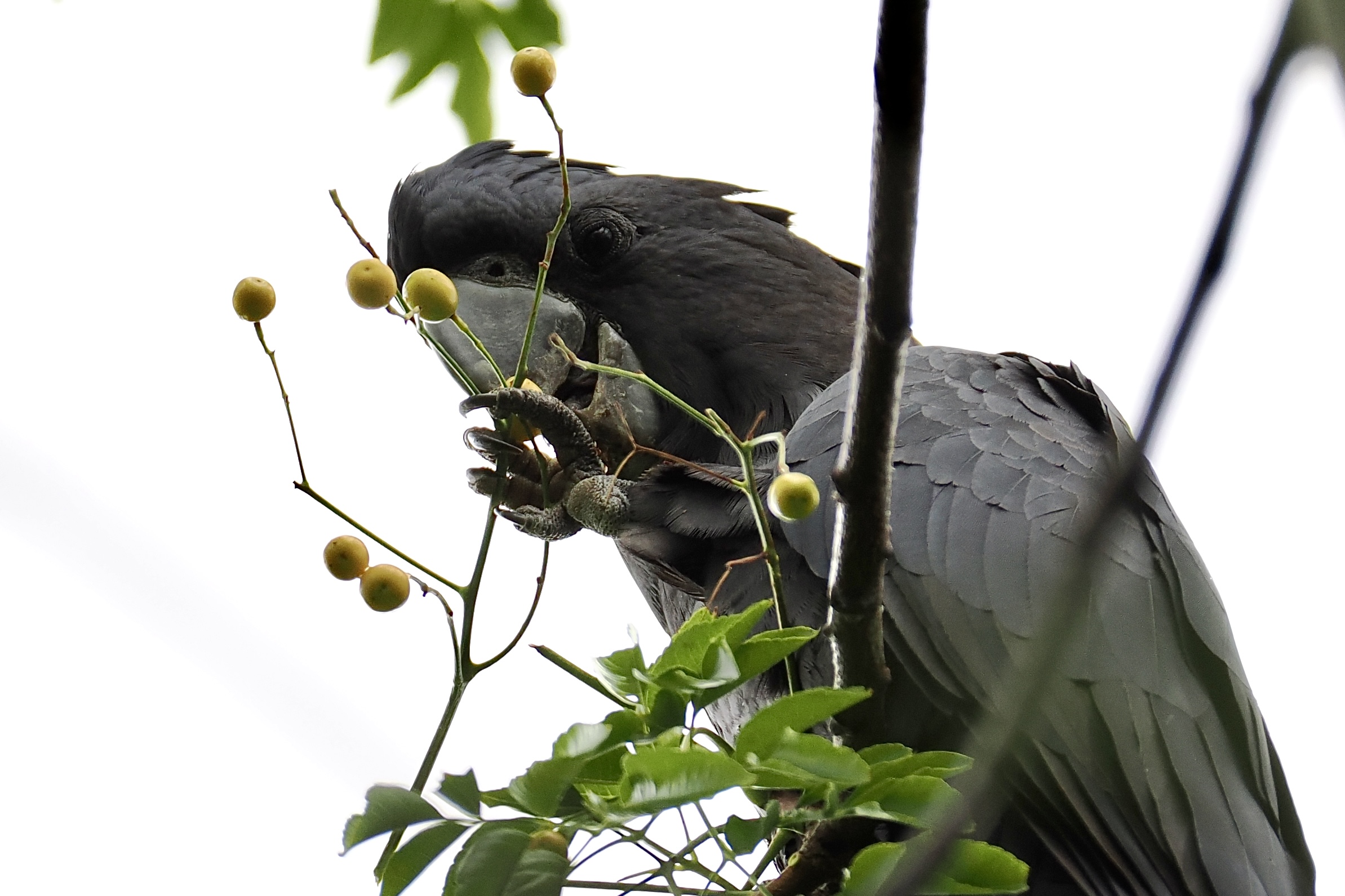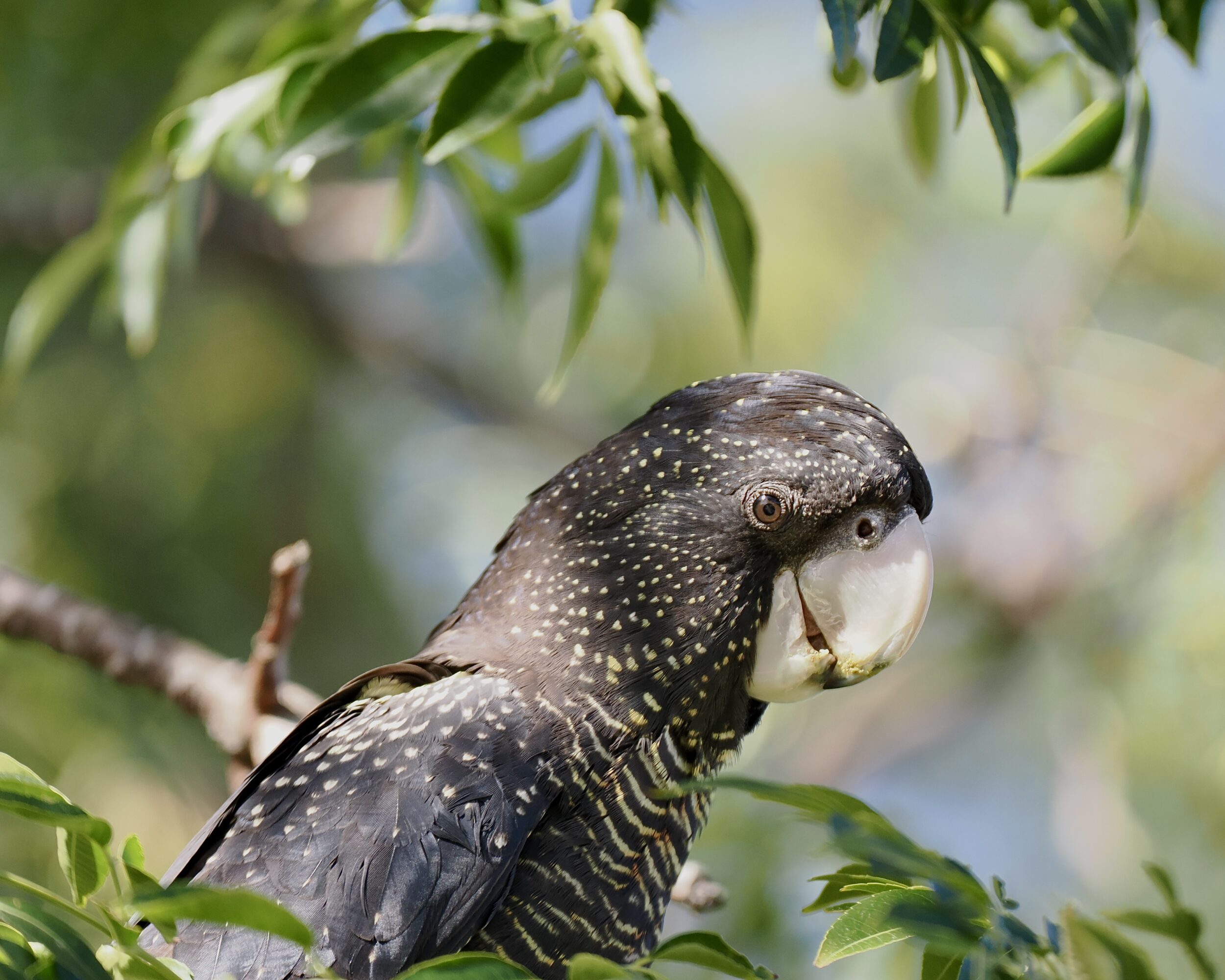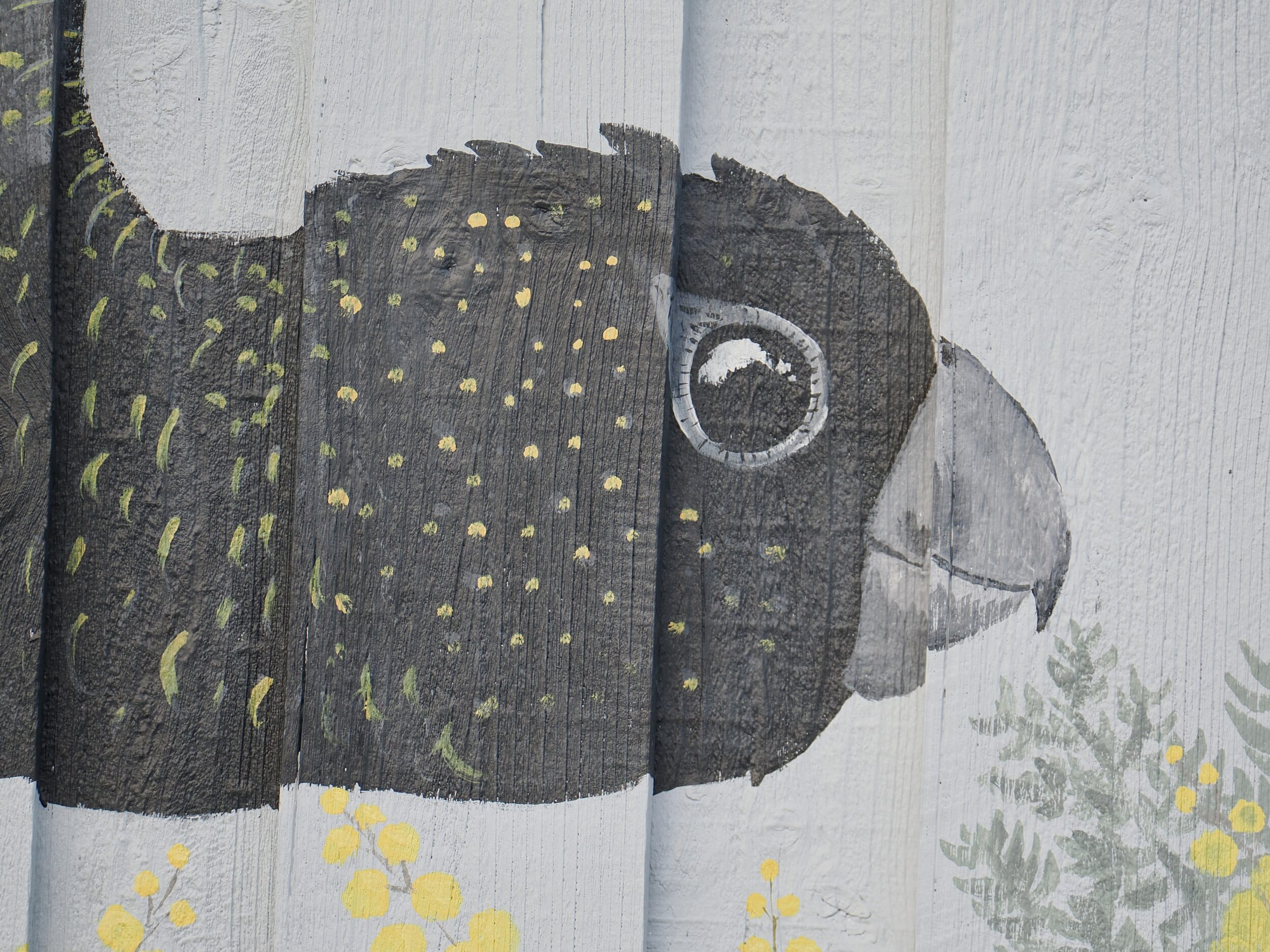In front, above, is a female red-tail.
Behind her is a male.
At the relevant time and place – 11.11 am on 01 May, in a so-called Cape Lilac tree, growing in a West Leederville lane – they were two of five red-tails, enthusiastically feasting on the same tree.
Debris was “raining” down, temporarily “greening” the asphalt.
One oft-evident aspect of same-species’ bird behaviour was conspicuously absent…as is very often the case with all three of southwestern Western Australia’s black cockatoos.
(equally magnificent, and also endangered, the other two are “our” planet’s only white-tailed black cockatoos)
